


The world continues to fight against the Covid-19, which has affected over 20 million people globally and claimed over 739,000 lives. Since the first coronavirus case was detected in India on 30 January 2020 it has spread rapidly, making it the third worst affected country in the world with over 22 lakh cases and 45,000 deaths. The United States continues to be the worst affected country with over 52 lakh cases followed by Brazil with 30 lakh cases.
The coronavirus, which surfaced in the Chinese city of Wuhan, has now spread to over 200 countries and has been declared a pandemic by the World Health Organization (WHO). Covid-19 is the transmittable infectious disease caused by the most recently discovered coronavirus and the most common symptoms of Covid-19 are fever, tiredness, and dry cough. Some patients may have aches and pains, nasal congestion, runny nose, sore throat or diarrhea.

A week before the government announced a complete nationwide shutdown forcing 1.3 billion Indians to stay indoors to tackle the spread of coronavirus, Team CVoter, an international polling agency, headquartered in New Delhi, started collecting daily data to track public sentiment about the virus. From 16 March onwards, the Team CVoter’s Covid-19 tracker has been keeping a daily track of issues related to the lockdown, levels of optimism, and preparedness and panic in the country, amongst other factors. In addition to this, in several waves, data has also been collected on important information about changes in levels of income, impact on jobs, the effect on mental health and levels of trust in several institutions, including the Central/ State government, police, army, hospitals.
We break down these numbers to show you a complete snapshot of how public perception about the threat of the virus, access to food, medical care, the economic impact of the lockdown, unemployment, trust in government has evolved during the pandemic in India.


As part of the Team CVoter’s Covid-19 tracker survey being conducted daily since 16 March, respondents across the country were asked whether they think they or someone in their family could catch coronavirus and whether they thought the threat from the virus was being exaggerated. Throughout the lockdown period in April and May (till 18 May), the percentage of respondents who thought they or someone in their family could catch Covid-19 remained steady at around 40-45%.
However, since the announcement of lockdown 4.0 on 18 May and the subsequent Unlock 1.0 announced from 1 June, we observe that the percentage of respondents who think they or someone in their family could catch the virus has been increasing. Since the announcement of relaxations and the unlock phases, the percentage has been increasing from 44% to around 57.9% as of 6 August.
Similarly, until the announcement of the first lockdown, more than half Indians believed that the threat from the virus was being exaggerated. Throughout the month of May (till before Lockdown 4.0) the percentage of Indians who thought the threat of Covid-19 was being exaggerated was stable at around 30%. However, since the lockdown relaxations have been introduced and the subsequent unlock phase, the percentage of Indians who think the threat is being exaggerated has been constantly increasing to around 50.5% as of 6 August.
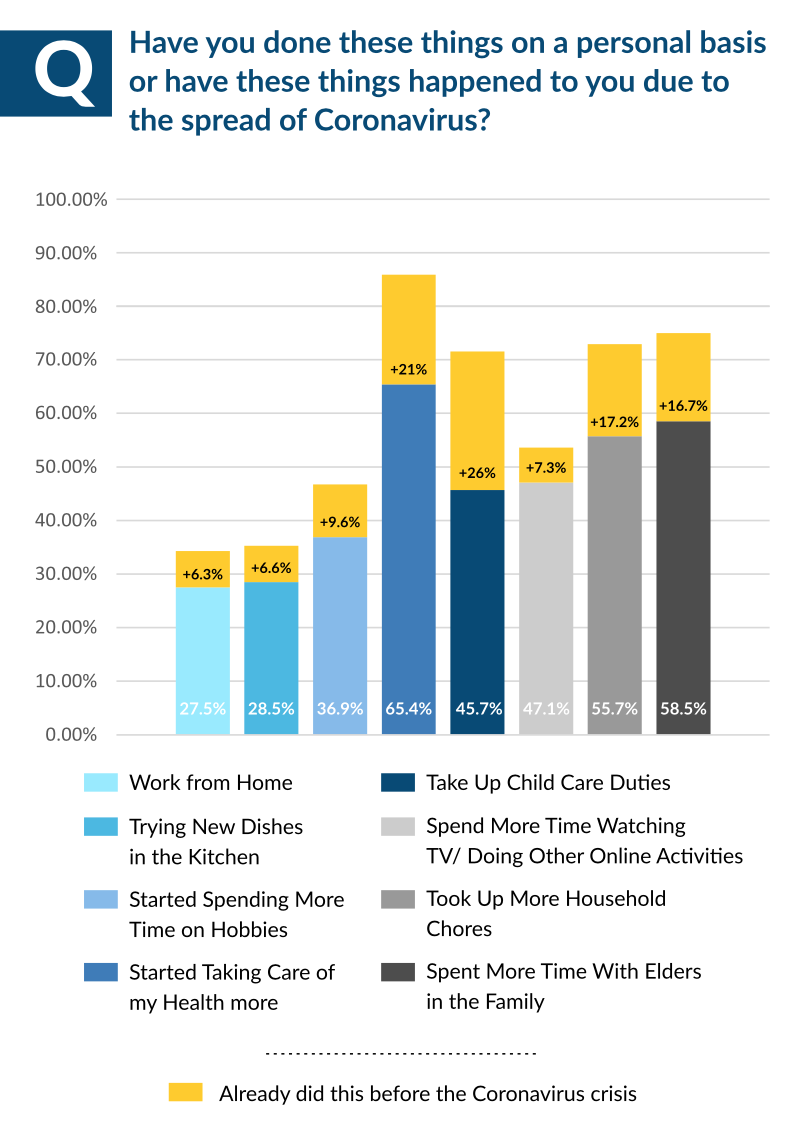
Respondents were asked about how the lockdown has affected their workhome life, working patterns, income, job security and optimism about the future. It is important to note that only 27.5% of respondents said that they were able to work from home during the lockdown, while an additional 6.3% of respondents said they were already doing this before the Covid-19 lockdown. This means roughly only 34% of respondents were working from home during the lockdown.
We further evaluated the disparities in work-fromhome patterns across demographics, including age, gender, education and income. Percentage of respondents in the young age group (below 25) who said they were able to work from home was the highest, followed by those in the (25-45) age group. The ability to work from home also varied slightly by gender, with roughly 30% of males stating they were able to work from home, while only 25% of women said the same.
In a country like India where overall Internet penetration is roughly 50%, which also includes mobile Internet subscribers that often don’t have the bandwidth to support daily work, transitioning to work from home is not possible for most people. Additionally, the Indian economy also relies heavily on non-IT companies, small and medium enterprises, BPO, KPO companies, employees working for airlines, leisure, hospitality industry, food preparation, retail sales, production, construction, maintenance and agriculture, most of which do not have the ability to shift to working from home.
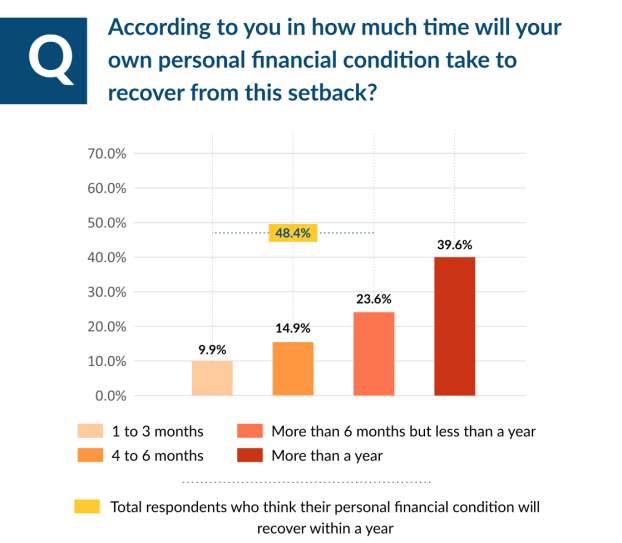

To estimate the economic impact of the lockdown and the pandemic on Indians, including the impact on their income, savings and future expenses, two waves of the economy survey were carried out in May and June 2020. While the percentage of people who reported being laid off or completely out of work reduced in June 2020 after the announcement of the first phase of the unlock process, this figure still remained alarmingly high at 22.2%. When comparing the same across demographics, we observe that respondents from lower education, lower-income, middle-age groups and females reported higher rates of job loss. At the same time, around 56.5% of households had their incomes negatively impacted by the Covid-19 lockdown.
Additionally, when asked about when they think the economy will be able to recover from the Covid-19 crisis, Indians reported being much more hopeful about the recovery of their personal financial condition than the economy. The majority of respondents (56.5%) said the economy will take more than a year to recover from the crisis, while 48.4% of respondents said they think their own personal financial condition will recover within a year. In addition to this, 39.2% of Indians also reported having lost substantial savings during the lockdown.
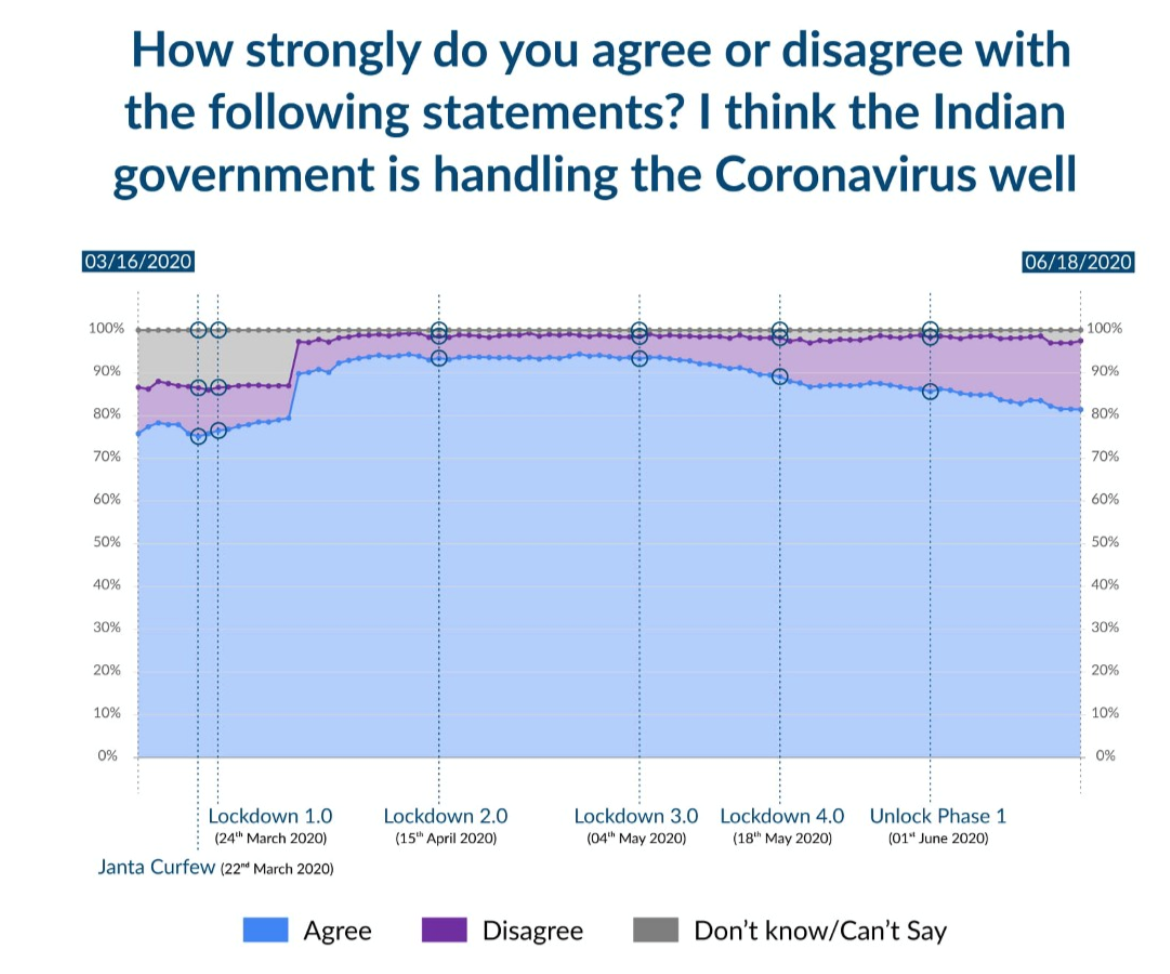

Respondents around the country were also asked whether they thought the Indian government was handling the Covid crisis well. It is observed that in the days leading up to the Janta Curfew on 22 March, around 75% of Indians believed that the government was handling the crisis well. After the announcement of the first nationwide lockdown on 24 March, this figure began to increase gradually, reaching 93% in the first few days of April. This high approval rating continued until the end of May. Since the announcement of the opening-up of the economy and the subsequent announcement of the unlock phases in June, the percentage of those who disagree with the way the government has been handling the crisis has been rising.
Additionally, as part of the economy battery of the survey, respondents were asked about their views on the relief package announced by the government. Support for the relief packages provided by the government is mixed, with 35.5% of people stating they think it is completely sufficient. Overall 63% think the government relief was sufficient, while 31.5% think it wasn’t.
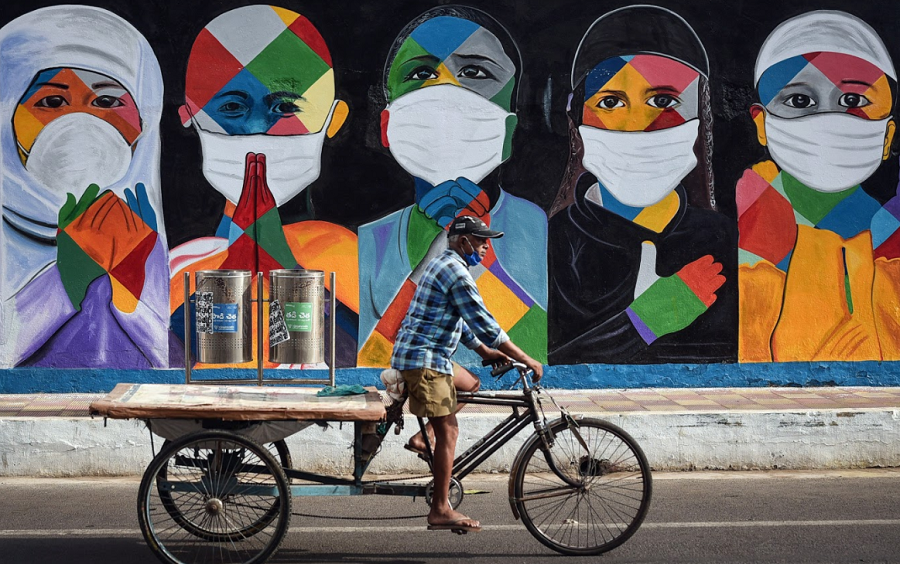

Respondents were also asked whether they had difficulty obtaining food or medical care during the lockdown, or expected the same to happen in the near future. 20.3% Indians reported having gone hungry or experienced difficulty obtaining food due to the pandemic, showcasing an alarming figure about the reality of hunger/fear of hunger in the country. Respondents were also asked about the availability of food/ration (or money for food or ration) in their households. It is critical to note that throughout various phases of the lockdown, during the months of April and May, roughly 11-13% of Indians still reported having ration/money for ration for less than a week. For a country of 1.35 billion, this would translate to around 150-175 million people who were living hand to mouth throughout the lockdown period. Additionally, 22.5% of Indians reported having difficulty getting general medical care during the lockdown, while an additional 21.6% reported expecting this to happen in the near future.


Amidst the ongoing Covid-19 crisis, Team CVoter conducted another series of surveys to find out the level of trust Indians placed in several institutions, including the Central/state government, police, Army, hospitals and several others. There was an increase in trust reported by the respondents in the police, Central and state government, while at the same time, the trust in both social media and imported goods from China declined considerably.
When comparing the 2020 and 2018 figures, we can see that there has been a substantial increase in the level of trust respondents across demographics reported in the police forces. The trust in police saw a dramatic increase of around 40% in light of the ongoing nationwide lockdown to contain the spread of the coronavirus. Similarly, in 2020, Indians registered an 18.3% increase in trust in both the state and Central government. Respondents were also asked about the level of trust they have in major sources of media. Indians deemed TV news channels to be the most trustworthy (42.3%), followed by newspapers (34.5%) and social media (12.5%).
There was also a massive decline in trust in private sector banks, with around 34% of respondents indicating that they would like to shift to a public sector bank. Similarly, in 2020, as compared to 2018, the trust Indians place in imported goods from China has fallen from 20.2% to 5.2%. At the same time, respondents who reported having “no trust at all” in Chinese goods increased from 25.8% to 62.6%.
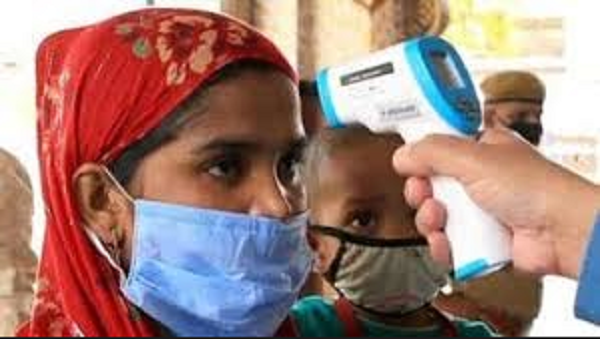
The Team CVoter’s Covid-19 tracker has been conducted every day from 16 March 2020 among 18+ adults statewide, including every major demographic. All the data is weighted to the known demographic profile of every state, including age group, social group, income, region, gender and education levels.

Team C-Voter uses Computer Assisted Telephone Interviewing (CATI) technology to carry out the survey, which is an interactive front-end computer system that aids interviewers to ask questions over the telephone. The survey is run in 11 national languages and a predictive dialer picks up the number to be dialled from the list of randomly generated numbers based on various telecom circles and digital exchanges in India; covering all the mobile telephonic service providers in the country, ensuring all of India is covered, both geographically and demographically.
(The map shows a typical coverage routine of the Team C-Voter India Omnibus survey on CATI, whereby, each dot marks one respondent. An omnibus survey is a method of quantitative research where data on a wide variety of subjects is collected during the same interview. Each change in colour marks a different state with a different language/dialect interview.)
Corona Tracker Economic Battery Wave 3 and 4 surveys carried out in May/ June 2020 (Sample Size: 1,474), “Trust in Institutions” survey carried out in 2010, 2018 and April 2020, Daily “Corona Tracker” Poll (From 17 March 2020)